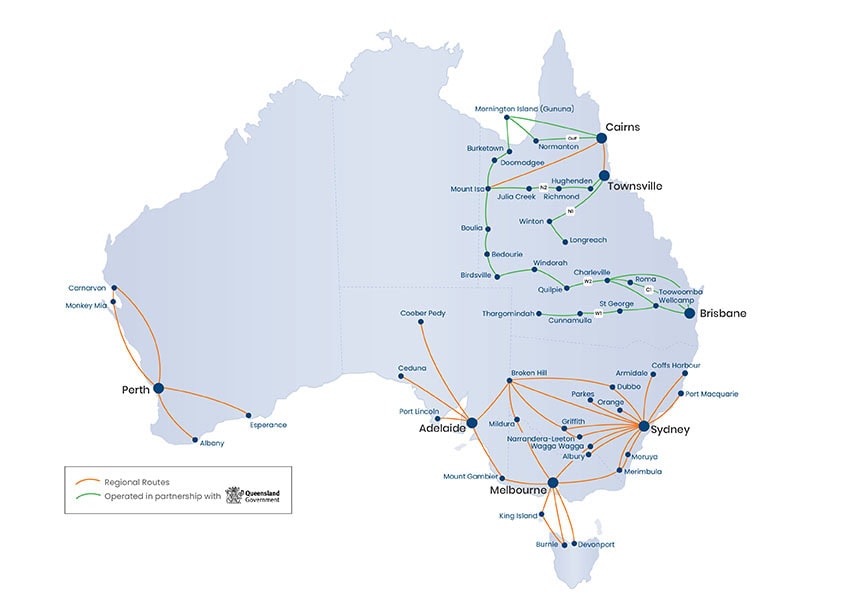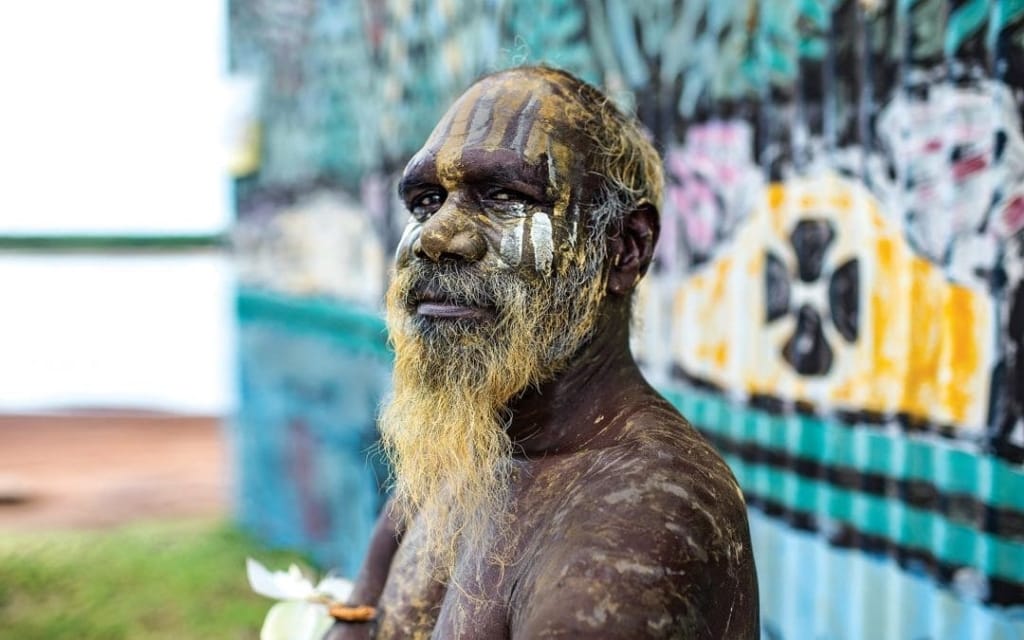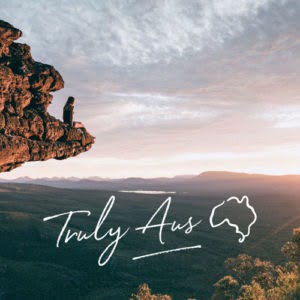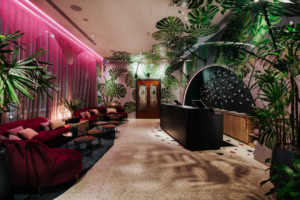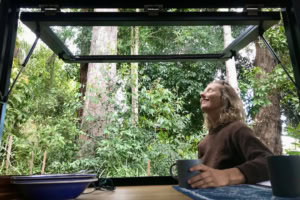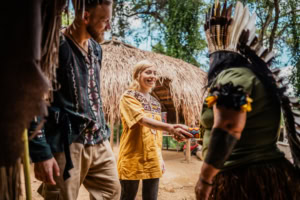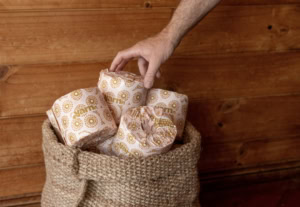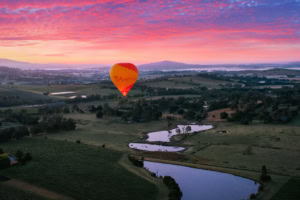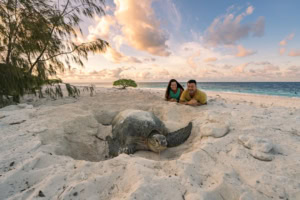The signature style of Tiwi art is embedded in cultural and ceremonial practices, but change is afoot.
Before Catholic missionaries arrived on the Tiwi Islands in the early 1900s, their Indigenous inhabitants painted the bodies of their loved ones before they were buried and decorated the carved wooden pukumani poles that stood beside their graves. The earthy colours they used were derived from natural materials, including yellow and white ochre and black charcoal.
These days you’re more likely to see the abstract, geometric designs the islands are known for on the bright, colourful costumes worn by the islands’ gregarious Sistagirls in the Sydney Gay and Lesbian Mardi Gras parade.
The group of Indigenous transgender, homosexual and bisexual people from Bathurst and Melville islands in the Northern Territory marched in the event for the first time last year, making headlines around the world. They are currently working with Tiwi Design art centre to produce their own fashion label, which they aim to model on the runway at the Darwin Aboriginal Art Fair in August.

Cultural adaptation
It’s just one of the many ways Tiwi Islanders have modified their culture to fit contemporary life, Tiwi Design’s manager Steve Anderson says. “When Darwin was bombed they adapted that into a dance that has become very famous,” he says. “It’s performed by eight people and there’s guns and aeroplanes.”
A stone’s throw from the beach in the Wurrumiyanga community – population 1,500 – on Bathurst Island, Tiwi Design consists of a carver’s shelter, pottery studio, screen printing studio, painting studio and gallery.
A core group of around 18 artists work there regularly, greeting visiting tour groups who arrive via ferry from Darwin with a traditional smoking ceremony. Women wave toxic leaves from ironwood trees to chase away evil spirits tourists may have brought with them, while men tap clap sticks and perform songs and dances associated with their family group’s animal totems, including crocodiles and turtles, which have been passed down from generation to generation.
Every day at the centre is different. On Monday, you will find artists painting on canvas, while Tuesday is wood-carving day and Wednesday is the day the potters gather. Elderly ladies also weave baskets at home and wander down to the gallery to sell them.
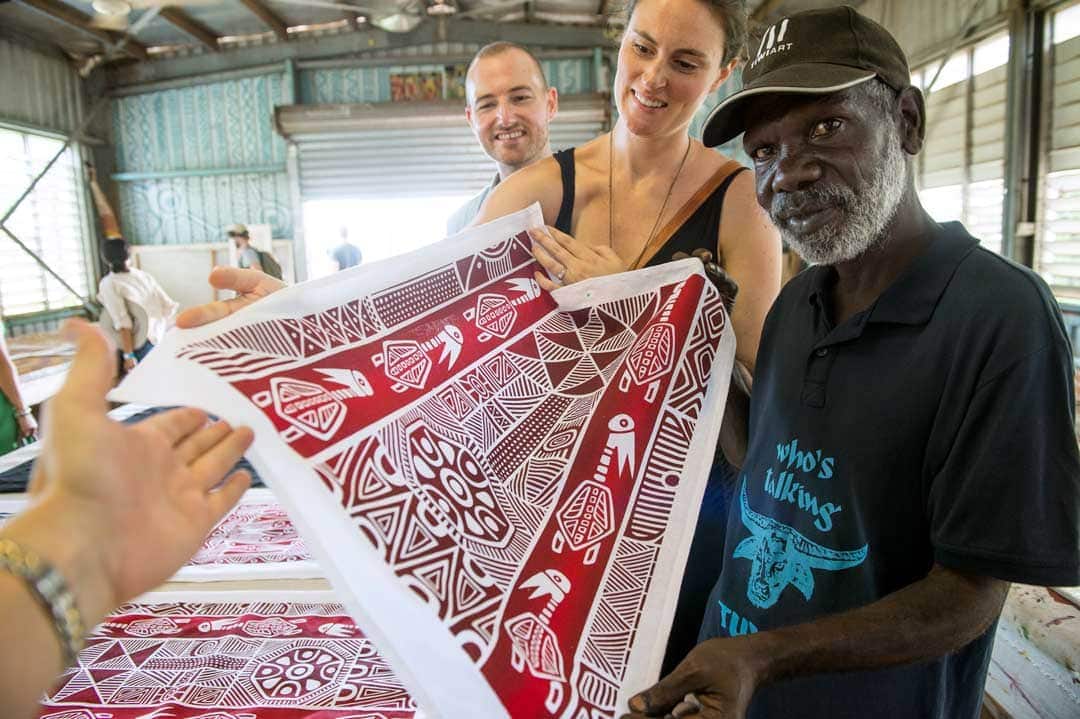
Location, location
The islands’ location, around 80 kilometres from the mainland, allowed their art to develop in relative isolation. “Tiwi art is quite different,” Steve says. “When you see the dance, song and painting it all goes together. The demand for these products exceeds the ability to supply it and we like it like that. We don’t want it to be a factory. We have people ranging from emerging to established artists.”
Some of the islands’ biggest success stories include the late Jean Baptiste Apuatimi, whose work is showcased in galleries throughout the world, and her daughter Maria Josette Orsto. Olivia Newton-John worked with the centre for products for her Koala Blue stores in the 1980s, and American comedian Whoopi Goldberg once popped in to have a frock made. Flamboyant English singer Boy George is also said to be a fan.
Alan Kerinaiua is one of the regular faces quietly beavering away at the centre. The 54-year-old remembers watching his uncles painting on bark as a youngster, so to him painting on canvas is a luxury. “I come here every day,” he says. “It’s good to come and work; it’s like a second home to me. We are like a big family here. We have a lot of tourists come in and buy my paintings. To me it’s good, but it’s also sad that it’s gone away to another place. Where is the new home? Is it in Australia or overseas. It goes a long way from home.”
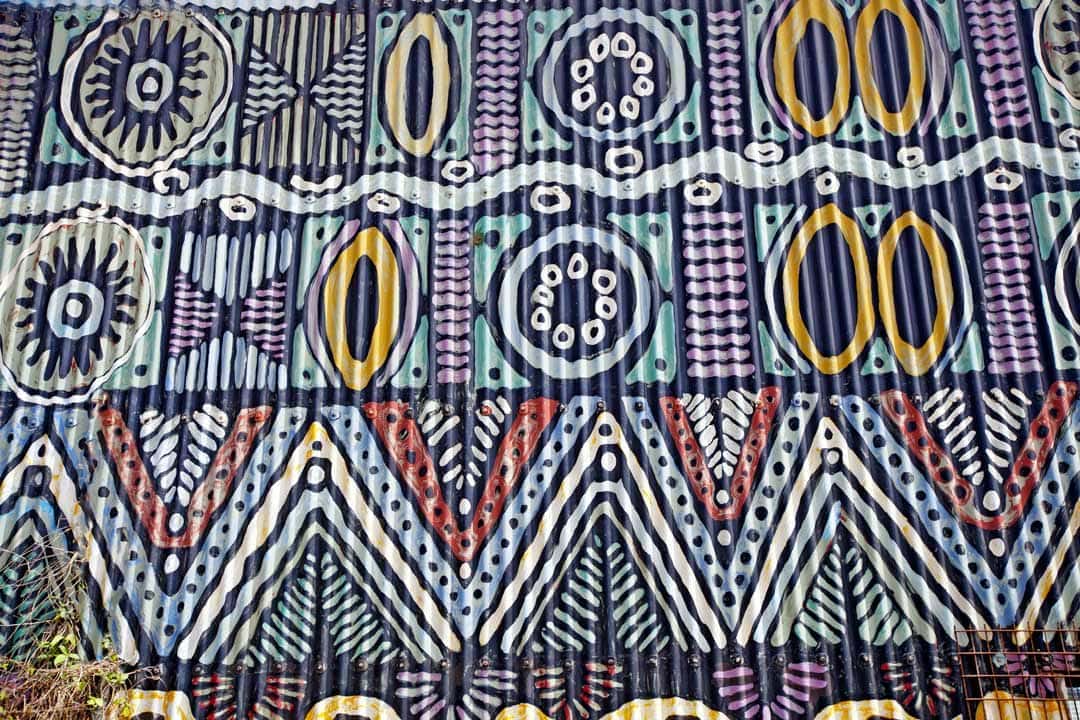
In the small village of Milikapiti, on the edge of the Tjipripu River on neighbouring Melville Island, the gallery at Jilamara Arts and Crafts Association displays the works of around 30 artists inspired by the sun and stars, animals such as dugongs and crocodile scales, spines and markings. The Tiwi word jilamara, which roughly translates to ‘design’, refers to the intricate ochre patterning traditionally applied to the bodies of dancers and on the surface of carved poles during the pukumani funeral ceremony.
“It’s a graphic design element,” the art centre’s manager Jackie Hocking says. “It’s a little bit different from the dot paintings you would see from the Central Desert, and even the works from Arnhem Land. Because they’re on islands and they speak their own language that brings the Tiwi people together.”
When it was originally established as an adult education centre in 1980 there was a strong focus on screen printing, but over the years that has been lost in favour of ironwood carving and painting on canvas, linen and paper. But that is soon set to change. “Everyone wants to bring screen printing back into the fold,” Jackie says.
Want to learn more about Indigenous Australia? Click here for more stories.
